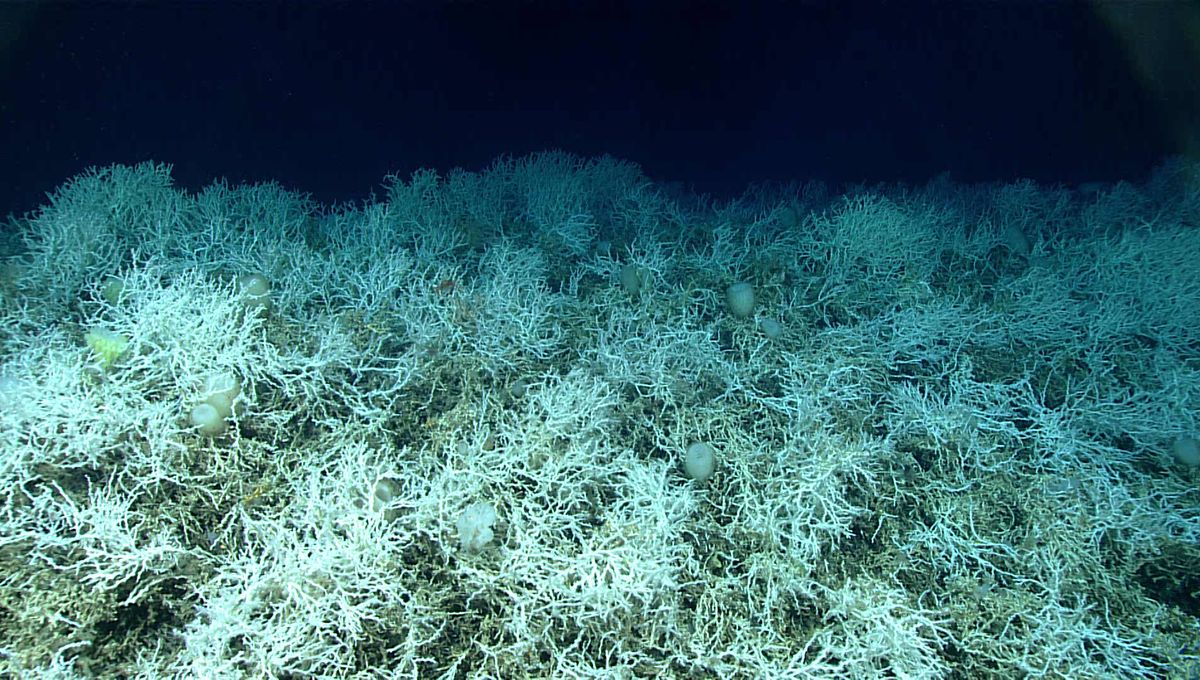
Some discoveries are more impressive than others and finding the largest deep-sea coral reef habitat in the world is pretty damn impressive.
The team at the National Oceanic and Atmospheric Administration (NOAA) has discovered an area larger than the state of Vermont that contains a whole seascape of cold-water coral mounds that had, until now, remained undiscovered off the southeastern coast of the US.
“For years we thought much of the Blake Plateau was sparsely inhabited, soft sediment, but after more than 10 years of systematic mapping and exploration, we have revealed one of the largest deep-sea coral reef habitats found to date anywhere in the world,” said Kasey Cantwell, operations chief for NOAA Ocean Exploration, in a statement.
Data from 31 multibeam sonar mapping surveys, as well as 23 submersible dives, were used to produce an almost complete map of the seafloor in the area known as the Blake Plateau, which is about 161 kilometers (100 miles) from the southeast coast of the USA. The researchers also developed a special system to help them look at the number of coral mound features; using this, they identified 83,908 individual coral mound peak features within the data.
The reef habitat is vast – it’s nearly the size of Florida. It’s thought to consist of nearly continuous coral mound features that span up to 500 kilometers (310 miles) long and 110 kilometers (68 miles) wide, with a core area of high-density mounds up to 254 kilometers (158 miles) long and 42 kilometers (26 miles) wide. Blake Plateau is also not uniform, with lots of variation in the height and density of the coral mound formation across it.
The area, aptly nicknamed “Million Mounds”, consists mostly of the stone coral Desmophyllum pertusum and has an average water temperature of 4°C (39°F). The area is also deep, found roughly 200 to 1,000 meters (656 to 3,280 feet) below the surface. No sunlight can penetrate these depths; instead, the corals filter-feed on nutrients from the surrounding seawater. Despite this, the coral is referred to as an ecosystem engineer, as it provides a foundation for other species, such as corals, sponges, invertebrates, and fish, to live within the mounds.
“Approximately 75% of the global ocean is still unmapped in any kind of detail, but many organizations are working to change that,” said Dr Derek Sowers, mapping operations manager for the Ocean Exploration Trust and lead author of the study.
“This strategic multiyear and multi-agency effort to systematically map and characterize the stunning coral ecosystem right on the doorstep of the U.S. East Coast is a perfect example of what we can accomplish when we pool resources and focus on exploring the approximately 50% of U.S. marine waters that are still unmapped,” Sowers added.
We can’t wait to see what else NOAA and their partners discover next.
The study is published in Geomatics.
Source Link: World’s Largest Deep-Sea Coral Reef Habitat Discovered Off The US Coast